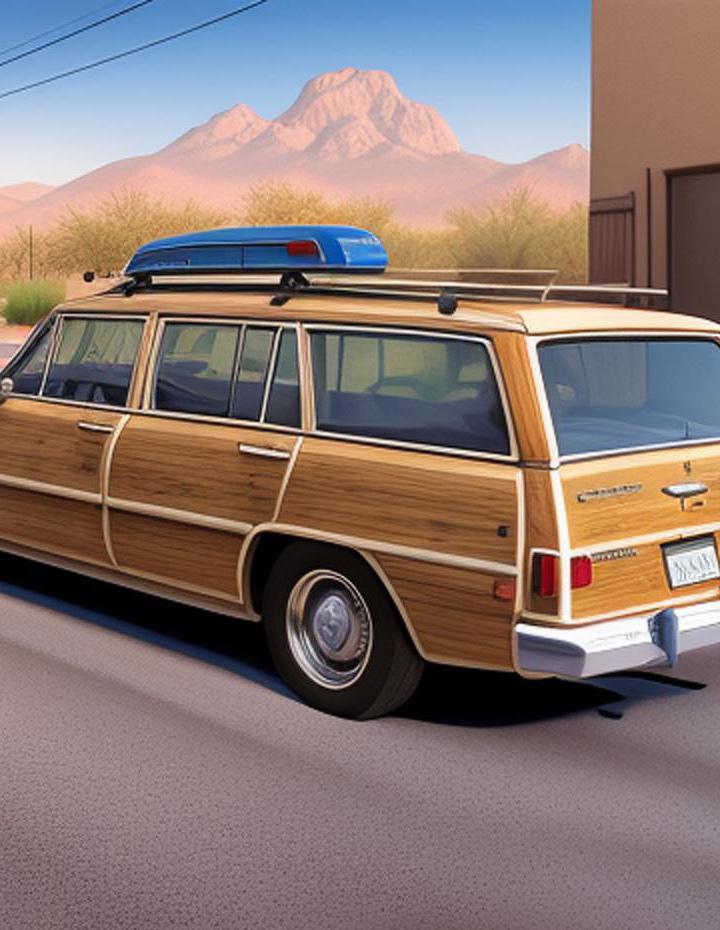
3 minute read
Looking back
What life was like in a station wagon
By Mordechai Schmutter
Kids nowadays don’t know what station wagons are. At least the kids I have nowadays. I showed them a picture and asked, “What is this?” and they didn’t know. One of them guessed it was a limousine.
So if a limousine is a vehicle where the rich people are thrown in the back, someone throws luggage on them, and the driver spends the whole time yelling at them to keep it down back there - then a limousine is a station wagon. Although I wonder why anyone would think rich people would not quickly figure out they could do better.
The truth is that a station wagon was more like a minivan’s short friend. It was great if you wanted to carry a lot of people but had no desire to see over traffic.
In the old days (like back in Europe), everyone had station wagons. Actually, Europe still has station wagons. In the US, we don’t really have them anymore because they stopped selling them, because we stopped buying them, because they stopped selling them.
Growing up, though, my family had a series of station wagons. As the oldest in the family, I always got to sit in the back seat, which, for no reason at all, was installed backward. As a result, I had no idea how to get ANYWHERE once I started driving. I just knew how to get back.
The station wagon was marketed as roomy because it had a third seat to keep your extra kids or luggage, but not both. Everyone tried for both.
Sure, there were downsides to sitting backward. For example, we got to sit there in horror and watch huge trucks bear down on us. But on the upside, everything we saw was a surprise. We were also in charge of peering out the window when my father tried to parallel park and telling him when he’d just hit the car behind him.
There was also a certain safety in knowing that if my father made a short stop, we were not going anywhere. On the other hand, we went flying out of our seats when he started the car because he had no idea whether we actually had our seatbelts on yet or were still climbing in.
And that was the other upside – climbing over the seats. We loved climbing over the seats. Sometimes we’d climb over as soon as my father unlocked his door, all the way from the driver’s seat. Everyone in the entire car had to sit on muddy footprints.
We also climbed over the seats to get out because, thanks to the infinite wisdom of the manufacturers, there was no door handle on the inside door of the back seat. If you wanted to get out, you’d have to wait until your parents remembered you were back there. So usually, when the car stopped, you’d all immediately climb over the seats on top of whoever was in the middle and try to all fall out of the car at the same time.
But we had a station wagon because what were our options? Station wagons held 7-8 people; the next car was a van that held 12 people but had no air conditioning. And if you had any number in between, you had a station wagon, and everyone somehow magically fit anyway. The roof rack helped...
One of our station wagons came in two colors. The top half was maroon, and the bottom half was wood paneling like someone ran out of paint halfway through. So sitting in the back was like sitting in a trunk in a basement from the 70s.
But we were very excited about this car because instead of being put in backward, the seats were installed sideways, facing inwards, like on the subway, and you could see out the front AND the back! Just not out whichever side of the car was behind you. Actually, you also couldn’t see anything out the other side either, except your annoying brother.
According to the manufacturer, each seat was made for two people, although they had to be skinny people with no legs. Each seat also had only one seatbelt, so it was like that amusement park ride where you spent the entire time trying not to fall on each other. And if your father made a short stop, the two of you became literally one person.
My parents had no idea that the back wasn’t actually made for 4 people. Especially since – and here was another benefit of station wagons, as far as adults were concerned – you couldn’t hear people complaining back there. Or maybe you could. But you could definitely claim you couldn’t. My mother always said, “Whatever you’re saying to me back there, I can’t hear you.”
“Then how come I can hear you?”
“Sorry, can’t hear you.”
“Then why do you keep telling us to keep it down?”










